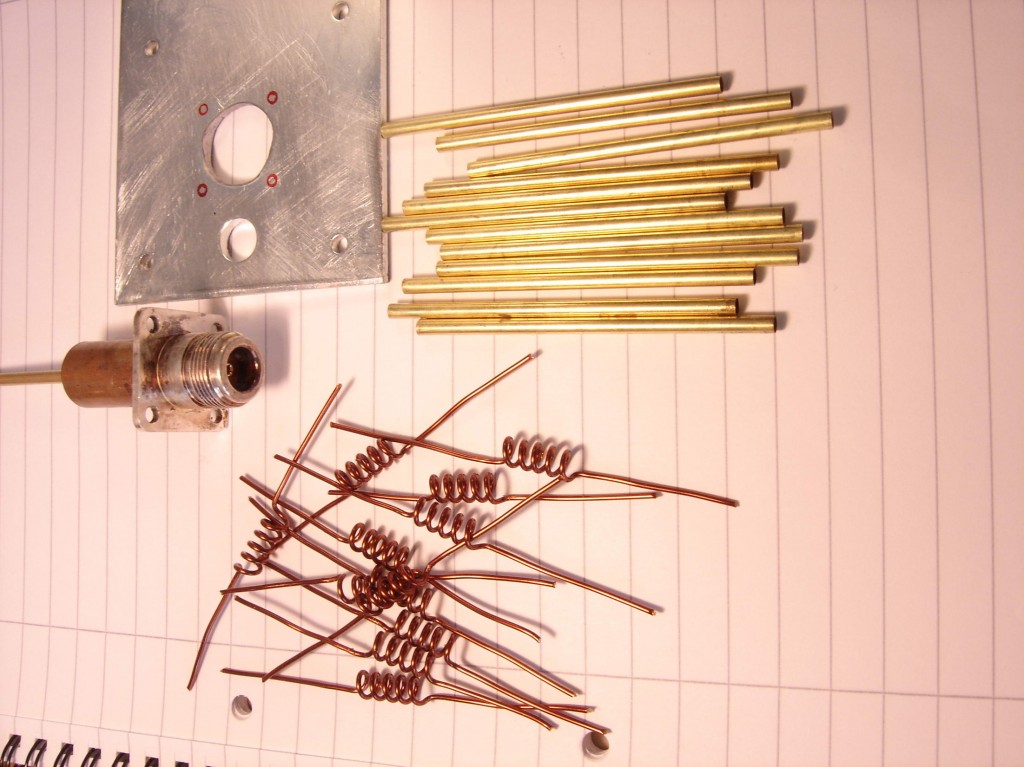
 JP Gleyzes has updated details to Low cost solar panel solution (MPPT + sun tracker). RAE has updated the project titled Torus Knot CNC Carver. Elliot Williams wrote a reply on BADGE FOR 2020+₮ SUPERCON (₮=years of lockdown). kaidenshi on A Raspberry Pi Phone For The Modern Era. craig on Bringing A Steam Train Back From Extinction. Foldi-One on This Headboard Contains An Artificial Sun. Twisty Plastic on This Headboard Contains An Artificial Sun. K on Lithium-Ion Battery Circuitry Is Simple. Arya Voronova on Lithium-Ion Battery Circuitry Is Simple. justsayin on A Cassette Interface For A 6502 Breadboard Computer, Kansas City-Style. animal717 on ARM Programming By Example. shod on Flip-Segment Digital Clock Is A Miniature Mechanical Marvel. Hackaday Podcast 188: Zapping Cockroaches, Tricking AIs, Antique 3D Scanning, And Grinding Chips To QFN 7 Comments Posted in Radio Hacks Tagged antenna, wi-fi, yagi, yagi antenna Post navigation Thanks to London Hackspace Radio Club for the tip. We’ve covered quite a few WiFi Yagis here over the years, such as this rather extreme wardriving tool. Give it a try, and bring connectivity back to far-flung corners of your home! It does however provide a significant improvement in range, which for the investment put in you certainly can’t complain at. The simulation predicts 8.6 dB of gain, though as any radio amateur will tell you, always take antenna gain figures with a pinch of salt. Though its construction may look rough and ready it has been carefully simulated, so it’s as good a design as it can be in the circumstances. has an interesting modification which changes that, he’s made a simple Yagi beam antenna from copper wire and part of a plastic yoghurt container, and slotted it over the sleeve dipole to make it directional and improve its gain and throughput in that direction. It radiates in all horizontal directions, or if you are a pessimist you might say it radiates equally badly in all horizontal directions.
JP Gleyzes has updated details to Low cost solar panel solution (MPPT + sun tracker). RAE has updated the project titled Torus Knot CNC Carver. Elliot Williams wrote a reply on BADGE FOR 2020+₮ SUPERCON (₮=years of lockdown). kaidenshi on A Raspberry Pi Phone For The Modern Era. craig on Bringing A Steam Train Back From Extinction. Foldi-One on This Headboard Contains An Artificial Sun. Twisty Plastic on This Headboard Contains An Artificial Sun. K on Lithium-Ion Battery Circuitry Is Simple. Arya Voronova on Lithium-Ion Battery Circuitry Is Simple. justsayin on A Cassette Interface For A 6502 Breadboard Computer, Kansas City-Style. animal717 on ARM Programming By Example. shod on Flip-Segment Digital Clock Is A Miniature Mechanical Marvel. Hackaday Podcast 188: Zapping Cockroaches, Tricking AIs, Antique 3D Scanning, And Grinding Chips To QFN 7 Comments Posted in Radio Hacks Tagged antenna, wi-fi, yagi, yagi antenna Post navigation Thanks to London Hackspace Radio Club for the tip. We’ve covered quite a few WiFi Yagis here over the years, such as this rather extreme wardriving tool. Give it a try, and bring connectivity back to far-flung corners of your home! It does however provide a significant improvement in range, which for the investment put in you certainly can’t complain at. The simulation predicts 8.6 dB of gain, though as any radio amateur will tell you, always take antenna gain figures with a pinch of salt. Though its construction may look rough and ready it has been carefully simulated, so it’s as good a design as it can be in the circumstances. has an interesting modification which changes that, he’s made a simple Yagi beam antenna from copper wire and part of a plastic yoghurt container, and slotted it over the sleeve dipole to make it directional and improve its gain and throughput in that direction. It radiates in all horizontal directions, or if you are a pessimist you might say it radiates equally badly in all horizontal directions. 
These antennas do a reasonable job of covering a typical home, because a vertical sleeve dipole is omnidirectional.

It’s a sleeve dipole, think of it as a vertical dipole antenna in which the lower radiator is hollow, and through which the feeder is routed. More recent and more fancy routers have more than one such antenna for clever tricks to extend their range or bandwidth, but even if the manufacturer has encased it in mean-looking plastic the antenna inside is the same. When we take a new Wi-Fi router from its box, the stock antenna is a short plastic stub with a reverse SMA plug on one end.







 0 kommentar(er)
0 kommentar(er)
